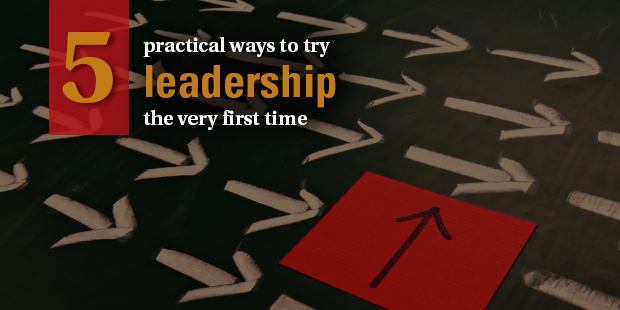
5 Practical Ways to Try Leadership the Very First Time
Help! I can’t find enough leaders!
I don’t know about you…but that is the most common complaint/concern I hear when I talk with small group champions. And the most common question I hear is “How can I find more leaders?” I’ve written a number of articles in answering that question. You can see them right here.
Today I want to talk about how to develop more leaders. This is an essential skill for all small group leaders but it’s not intuitive for most and it will rarely happen naturally or on the initiative of your existing leaders. If you want it to happen system-wide, you must teach the concept and develop the expectations and skills that make it happen.
Basic Concept
The basic concept is that every group has multiple people who can lead (or help lead) a group. I’m not suggesting that everyone can lead. I’m simply pointing out that there are many group members who actually could lead a group if they were given the opportunity and motivated somehow to try it.
Do you believe that? I hope so. If you believe that, then the next step is to help your existing leaders begin to practice the skills that will allow and encourage everyone who can lead to give it a try.
Leader Development Practices
Here are five practices that will help more adults give leading a try.
- Make it a fun experiment! As you begin a new study, let everyone know that “we’re all going to take a turn facilitating this one.” To do that, you’ll need to select a study that requires little preparation and comes very close to leading itself (which is always a great idea).
- Begin by handing off sections of every session. “Bob, why don’t you lead the Connect section next week?” “Sue, next week I’d like you to lead the prayer time at the end. Watch how I do it this week and then you do it next week. Okay?” Starting members out with bite-sized assignments will ease a toe into the water of leading. Always a good place to begin.
- Practice sub-grouping as often as you can. Start when you have 7 members. Never stop. You can begin by random sub-grouping (I’ve tried everything from counting off by threes or drawing numbers from a hat) and move to more intentional (affinities that might ultimately result in a new group).
- Meet separately from time to time or on a regular basis. Many groups have developed the practice of meeting together twice a month and separately twice a month (i.e., let the men and women have their own time on occasion). This helps develop additional leadership capacity…as long as you don’t just recruit the usual suspects.
- Broaden the invitation list for leader training events and meetings. Encourage all of your group leaders to bring additional facilitators to your leader training events. Include a breakout designed for new facilitators in the skill training section on your meeting agenda.
Want to develop more leaders? Start making leader development a priority. Better yet…start measuring the number of groups that do what we’ve talked about here. You’ll begin to see development.

Tags: Leadership Development, Leadership Engine, Mark Howell, Structure












